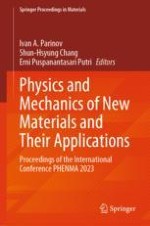
2024 | OriginalPaper | Buchkapitel
Control Over Morphological Characteristics of the Pt/C Catalysts Obtained by the Liquid-Phase Synthesis
verfasst von : Yu. Bayan, K. Paperzh, M. Danilenko, D. Alekseenko, Yu. Pankova, I. Pankov, A. Alekseenko
Erschienen in: Physics and Mechanics of New Materials and Their Applications
Verlag: Springer Nature Switzerland
Aktivieren Sie unsere intelligente Suche, um passende Fachinhalte oder Patente zu finden.
Wählen Sie Textabschnitte aus um mit Künstlicher Intelligenz passenden Patente zu finden. powered by
Markieren Sie Textabschnitte, um KI-gestützt weitere passende Inhalte zu finden. powered by